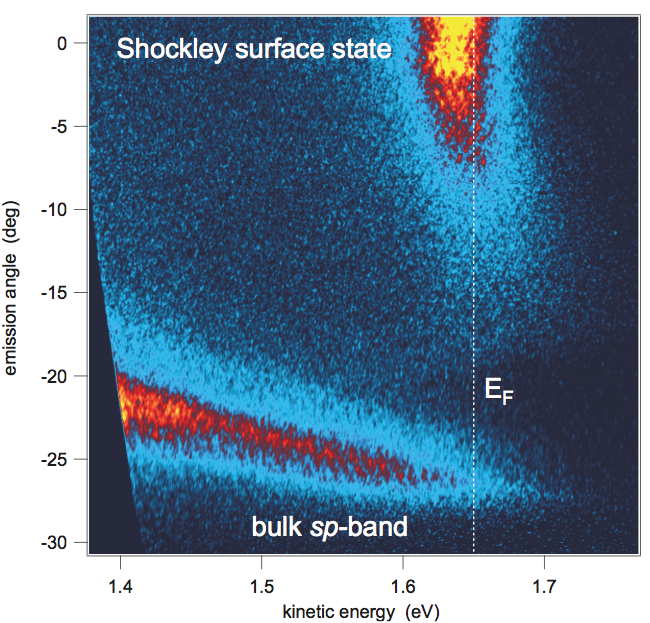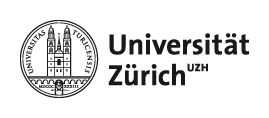Ultrafast electron dynamics and scattering

This project is aimed at understanding the dynamics of electronic and structural changes in solid surfaces. Typical timescales of such ultrafast phenomena are in the range of attosecond to picoseconds.
We employ pump-probe spectroscopy with various light sources to investigate these processes. Typically the pump laser pulse is used to trigger the ultrafast process by promoting electrons from the ground state into excited states of the system under scrutiny. The probe pulse arrives at a well-defined delay after the pump pulse and provides information of the out-of-equilibrium electronic structure at a given instant in time.
Our lab is equipped with a commercial femtosecond laser system consisting of a mode-locked Ti:sapphire oscillator, regenerative amplifier and optical parametric amplifier that covers photon energies between 1.5 and 6.0 eV, and higher harmonics of about 15 eV, which are produced in vacuum. The laser system runs at repetition rates of several hundreds of kilo-Hertz.
Recent Projects
Within NCCR MUST (2010-2022):
We built a new highly versatile and mobile surface science apparatus that can be connected to various specific photon sources available within NCCR MUST and at large scale research facilities. Here we probed the fastest possible electronic processes in solids including photoemission itself with attosecond resolution.
We advance established x-ray photoelectron diffraction (XPD) towards lower energies in the UV to probe the structure of solid surfaces and molecular adlayers and we were the first to demonstrate the observation of structural dynamics by time-resolved photoelectron diffraction. Currently we study layers of donor-acceptor complexes and carbon nanodots adsorbed on solid surfaces in view of electron transfer processes across the interfaces using time- and angle-resolved photoelectron spectroscopy.
In collaboration with the Ultrafast Molecular Spectroscopy Group at the University of Bern (Prof. A. Cannizzo) and Shi-Xia Liu (Department of Chemistry, University of Bern), as well as several members of the National Center of Competence in Research Molecular Ultrafast Science and Technology NCCR MUST. Theoretical support is provided by the group of PD Dr. Marcella Iannuzzi from the Department of Chemistry at UZH.
LightChEC and SNF Project "Surface physics with single-layer materials and molecular layers":
By means of time- and angle-resolved photoelectron spectroscopy we study model systems for catalyst materials in view of photoinduced water splitting, for instance (see project LightChEC). The materials investigated usually are semi-conducting metal oxides with energy gaps well suited for light harvesting from the solar spectrum. Lifetimes and electron transport can be studied as function of surface quality, band bending and adsorbed layers.
Furthermore, we investigate electron dynamics in single-layer hexagonal boron nitride layers on metal surfaces (see project 2D Materials). The goal of these studies is to understand the electronic properties of 2D hetero-structures and of hexagonal boron nitride which, due to its large energy gap, is an excellent candidate material for ultraviolet optical applications.
In collaboration with the LightChEC consortium at UZH.
Team
- Dr. Matthias Hengsberger
- Theodor Schaller
Latest publications
- Surface electronic structure of Ni-doped Fe3O4(001)
Phys. Rev. B 108, 155403
→ DOI: 10.1103/PhysRevB.108.155403 - Protected ultrathin cuprous oxide film for photocatalysis: Excitation and relaxation dynamics
Phys. Rev. Materials 7, 045801 (2023)
→ DOI: 10.1103/PhysRevMaterials.7.045801 - Importance of surface oxygen vacancies for ultrafast hot carrier relaxation and transport in Cu2O
Phys. Rev. Research 3, 043219 (2021)
→ DOI: 10.1103/PhysRevResearch.3.043219 - Charge carrier dynamics and self-trapping on Sb2S3(100)
Phys. Rev. Materials 5, 075401 (2021)
→ DOI: 10.1103/PhysRevMaterials.5.075401 - Adsorption geometry and electronic structure of a charge-transfer-complex: TTF-PYZ2 on Ag(110)
New J. Phys. 23, 013002 (2021)
→ DOI: 10.1088/1367-2630/abcace - ...[→ more publications]



